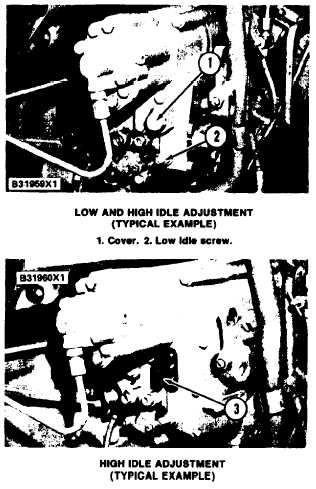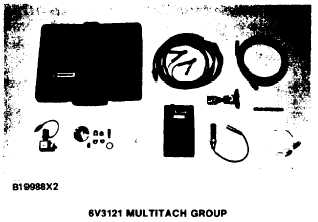FUEL SYSTEM
TESTING AND ADJUSTING
TM 5-3805-263-14&P-2
GOVERNOR ADJUSTMENTS
Low and High Idle Adjustment
CAUTION
A mechanic with training in governor adjust-
ments is the only one to make the adjustment
to the low idle and high idle rpm.
Engine rpm must be checked with an accurate
tachometer. Make reference to MEASURING EN-
GINE SPEED.
NOTE: The correct low idle and high idle rpm are in
the FUEL SETTING INFORMATION.
To help prevent an accident caused by parts in
rotation, work carefully around an engine that
has been started.
Start the engine and run until the temperature of
normal operation is reached. Check low and high idle
rpm with no load on the engine. If an adjustment is
necessary, use the procedure that follows:
1. To adjust the LOW IDLE rpm, start the engine
and run with the governor in the low idle posi-
tion. Loosen the locknut for low idle screw (2).
Turn the low idle screw to get the correct low idle
rpm. Increase engine speed and return to low idle
and check low idle speed again. Tighten the
locknut.
2. To adjust the HIGH IDLE rpm, cut the lockwire
and remove cover (1). Start the engine and run
with the governor in the high idle position. Loo-
sen the locknut for high idle screw (3). Turn the
high idle screw to get the correct high idle rpm.
Decrease engine speed and return to high idle
and check high idle rpm again. Tighten the lock-
nut and install cover (1) and lockwire and seal.
Dashpot Screw Adjustment
The dashpot adjustment screw does not normally
need adjustment from the factory setting. If the en-
gine is slow to change rpm with a change in load, it is
possible that the dashpot adjustment screw is not
adjusted correctly.
1-55



